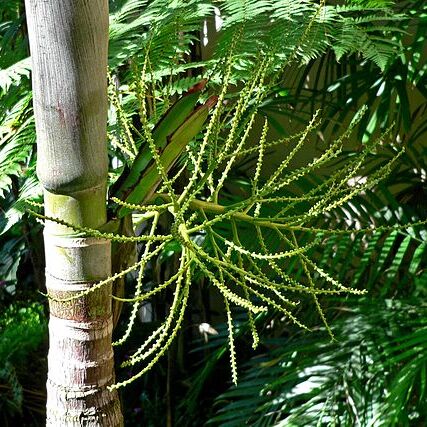Stems solitary or clustereding, less than 15 cm in diam., unarmed. Leaves: sheath green, unarmed, forming crownshaft; blade pinnate, unarmed; plication reduplicate; segments in 1 plane, usually cuneate, apices jagged and irregular, cleft. Inflorescences axillary below crown of leaves, paniculate, with 2 or 3 orders of branching, pendulous; prophyll short; peduncular bract tubular; secondary peduncular bracts often present, incomplete. Flowers unisexual, sessile, in triads of 1 pistillate flower flanked by 2 staminate flowers. Staminate flowers: sepals 3, imbricate, free; petals 3, valvate, free; stamens [9--]25--34 [or more], in whorls of 3 or more; pistillode present, with slender style. Pistillate flowers: sepals 3, imbricate, free; petals 3, imbricate, free; staminode lobes or scales present; pistils 1; ovules 1; styles indistinct; stigmas 3. Fruits drupes, small; exocarp red [black], smooth; mesocarp fleshy; endocarp bony, 5-lobed in cross section [obscurely lobed]. Seeds ovoid; endosperm homogeneous or ruminate; embryo basal; eophyll 2-cleft, segments linear, apices jagged and irregular.

